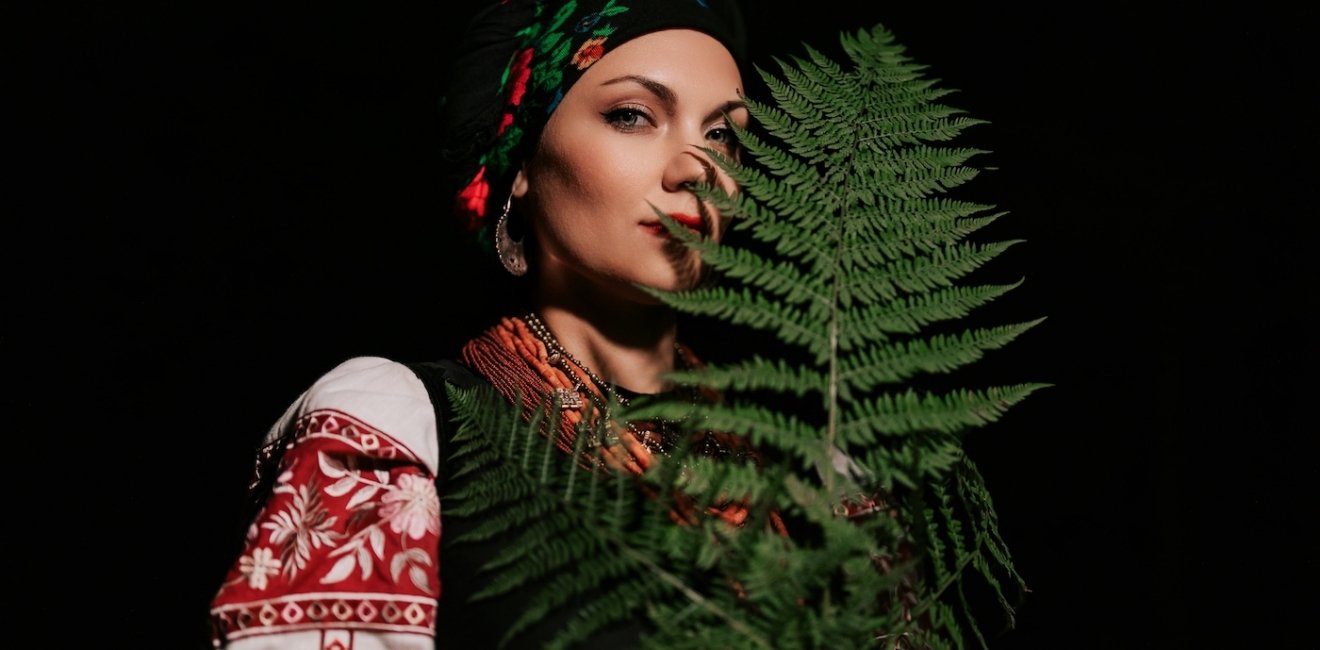
A blog of the Kennan Institute
Bread or some other pantry staple might seem to await those patient souls standing in a three-hour long queue during the height of a war. In Kyiv, this spring, it was theater.
For months, director Ivan Urovsky’s production of Hryhoriy Kvitka-Osnovyanenko’s novel The Witches of Konop has sold out at Kyiv’s venerable Ivan Franko National Drama Theater. The lines have taken over nearby streets as early as 5 a.m., in part because of wartime restrictions on the frequency of shows. They have grown as theater management stopped making seats available online to counteract the large number of fraudulent tickets being resold at exorbitant prices. Old-fashioned trips to the box office are the only way to buy a legitimate coupon to gain entrance.
Ticket demand has run high ever since the play’s premier a year ago. Director Urovsky, artist Tetiana Ovsiychuk, and choirmaster Susanna Karpenko each have won prestigious Shevchenko Prizes for their work. And The Witches has won the war-weary city’s heart.
Urovsky’s adaptation is but the latest take on a nearly two-century-old story of Cossacks, misplaced witch hunts, and tortured love. Author Kvitka was born in 1778 in the village of Osnova, which is today within the Kharkiv city limits. By century’s end, he became a writer and one of the earliest proponents of Ukrainian as a literary language. As his career took shape, he added “Osnovyanenko” to his pen name to mark his ties to his birthplace.
By 1812, Kvitka had become the editor of one of the first literary journals published in Ukrainian, and the director of a new theater in Kharkiv. His satirical novels and plays—including Marusia, one of the first novellas in Ukrainian—attracted readers and audiences to his work. His Visitor from the Capitol or Turmoil in a District Town is said to have inspired his friend Mykola Hohol (Nikolai Gogol) to pen his famous Government Inspector. The Witches of Konop appeared as Kvitka’s second book, in 1837, though it had been written four years earlier.
Witches tells the story of Nikiya Ulasovich Zabryokha, the local Cossack leader in Konotop, his clerk Pistryak, and the witch Yavdokha Zubikha. The convoluted story of intrigue revolves around Cossack troops, failed love, faux bravery, and a search for the witch, who is preventing rain from falling on the village.
Hoping to attract rain clouds, authorities bound local women and threw them into a nearby pond. If they died, they were innocent; if they floated, they were witches. Zubikha survived, and the locals began to beat her up. Zabryokha saved her and asked her, in return, to make an unrequited love marry him. The witch did so but cast a spell over the couple so that their marriage would be an unhappy one. After several more twists and turns, everyone dies.
Full of moments open to conflicting interpretation, this tale has inspired films, numerous stage adaptations, and even a popular 2016 rap tune. Every Ukrainian knows the story’s general contours, which opens opportunities for ever more creative reinterpretations and dramatic stagings. Urovsky’s modernist setting at the Ivan Franko provides a startling counterpart to a story that is premodern in outlook but which feels fresh. A popular social media video circulating just after the Russian full-scale invasion shows an old Ukrainian woman yelling at a young Russian tank driver attempting to make his way down her village’s main street. “Don’t you know where you are?” she cries. “You’re in Konotop. Every other woman here is a witch.” She then placed a curse on the invader, to ruin his love life.
The opinions expressed in this article are those solely of the author and do not reflect the views of the Kennan Institute
Author

Former Wilson Center Vice President for Programs (2014-2017); Director of the Comparative Urban Studies Program/Urban Sustainability Laboratory (1992-2017); Director of the Kennan Institute for Advanced Russian Studies (1989-2012) and Director of the Program on Global Sustainability and Resilience (2012-2014)

Kennan Institute
The Kennan Institute is the premier US center for advanced research on Eurasia and the oldest and largest regional program at the Woodrow Wilson International Center for Scholars. The Kennan Institute is committed to improving American understanding of Russia, Ukraine, Central Asia, the South Caucasus, and the surrounding region through research and exchange. Read more

Explore More in Focus Ukraine
Browse Focus Ukraine
Talking to the Dead to Heal the Living

Ukrainian Issue in Polish Elections


